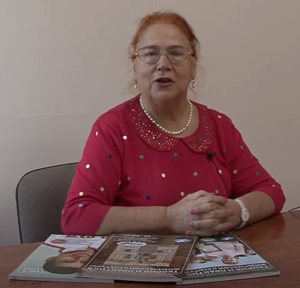Ways of decrease of sickness rate of preschool children by means of physical culture
Фотографии:
ˑ:
Ways of decrease of sickness rate of preschool children by means of physical culture
N.G. Mikhaylov, associate professor, Ph.D. M.A. Volkov, postgraduate student. Pedagogical institute of physical culture, Moscow
Key words: child's health, motor activity, innovative technologies of physical education, Agashin's training simulator.
The purpose of the research was to search for the ways of solution of the problem of recreation of preschool children.
The system of increase of motor activity of senior preschool children is subjected using innovative technologies, promoting the increase of its volume in preschool children.
The exercise sets with Agashin's training simulator were included in day regimen as an innovative
constituent of increase of motor activity of senior preschool children.
The introduced program with increased volume of motor activity resulted in: decrease of sickness rate in the experimental group; increase of the level of development of physical qualities: 6 children of the senior experimental group had the level increased from the average to high, decrease of the number of children with low and average levels of physical development.
Procceding from the year long pedagogical experiment, motor activity is higher in children who were ill less frequent and, on the contrary, frequently ill children move less and their indices of physical development are lower.
Bibliography
1. Agashin, M.F. Wave "Agashin's Simulator" manual. OOO "MAG-MAC" / M.F. Agashin, A.S. Kakhidze. – Мoscow, 2009. http://agashin.ru/sport_exercises. (In Russian)
2. Alyab'eva, N.V. Diagnostics of psychophysical and functional state of preschool child: study guide / N.V. Alyab'eva. – Murmansk, 1998. P. 4–89. (In Russian)
3. Babenkova, E.A. How to help children to be healthy: guidance / E.A. Babenkova. – Мoscow: Astrel', 2003. – 206 P. (In Russian)
4. Dvorkin, L.S. Age features of development of mental processes in 3-6-year-old children by means of physical education / L.S. Dvorkin, Yu.K. Chernyshenko // Fizicheskaya kultura: vospitanie, obrazovanie, trenirovka. 1997. – № 2. (In Russian)
5. Zaytseva, V.V. // Novye issledovaniya /V.V. Zaytseva. – Мoscow:
Verdana, 2003. – № 1(4): Age physiology - stages of development. – P. 36–52. (In Russian)
6. Matveev, A.P. Physical culture. Program for 1-11-formers referred to special medical group by state of health / A.P. Matveev. – Мoscow: Drofa, 2003. – 112 P. (In Russian)
7. Mikhaylov, N.G. Formation of approaches to the syatem of continuous education on physical culture in "primary school - kindergarten" / N.G. Mikhaylov, A.P. Matveev // Teoriya i praktika fizicheskoy kultury. – 2009. – № 6. – P. 58–64 (In Russian)
8. Runova, M.A. Child's motor activity in a kindergarten: guide for teachers of preschool institutions, teachers and students of teacher's universities and colleges /M.A. Runova. – Мoscow: Mozaika-Sintez, 2000. (In Russian)
9. Fedorovskaya, O. Sports-recreational and prevention work in preschool educational institutions / O. Fedorovskaya //Doshkol'noe vospitanie. – 2004. – № 1. (In Russian)
10. Khripkova, A.G. Age physiology and school hygiene: study guide for ped. institutes / A.G. Khripkova, M.B. Antropova, D.A. Farber. – Мoscow, 1990. (In Russian)
11. Chechenov, Kh.D. Extended meeting of commission of the Federation Council for physical culture, sport and development of Olympic movements and Committee of the Federation Council on education and science. On the state and perspectives of development of the system of physical education and sport in comprehensive institutions / Kh.D. Chechenov, V.A. Fetisov.– Мoscow, 2006. (In Russian)
12. Scherbakov, V.P. Physical culture from 3 to 18 years old: guidance / V.P. Scherbakov / Series: "Instructive-methods content of education in Moscow" / Ed. by L.E. Kurneshov. – Мoscow: S, 2006. – Shkol'naya kniga P. (In Russian)



